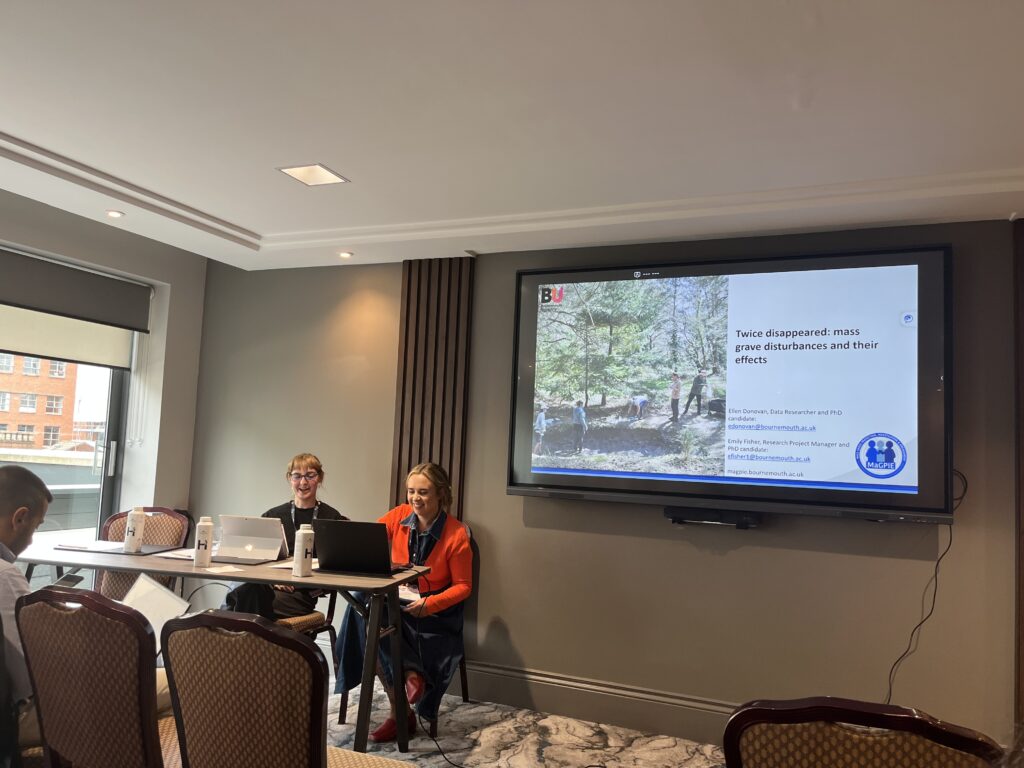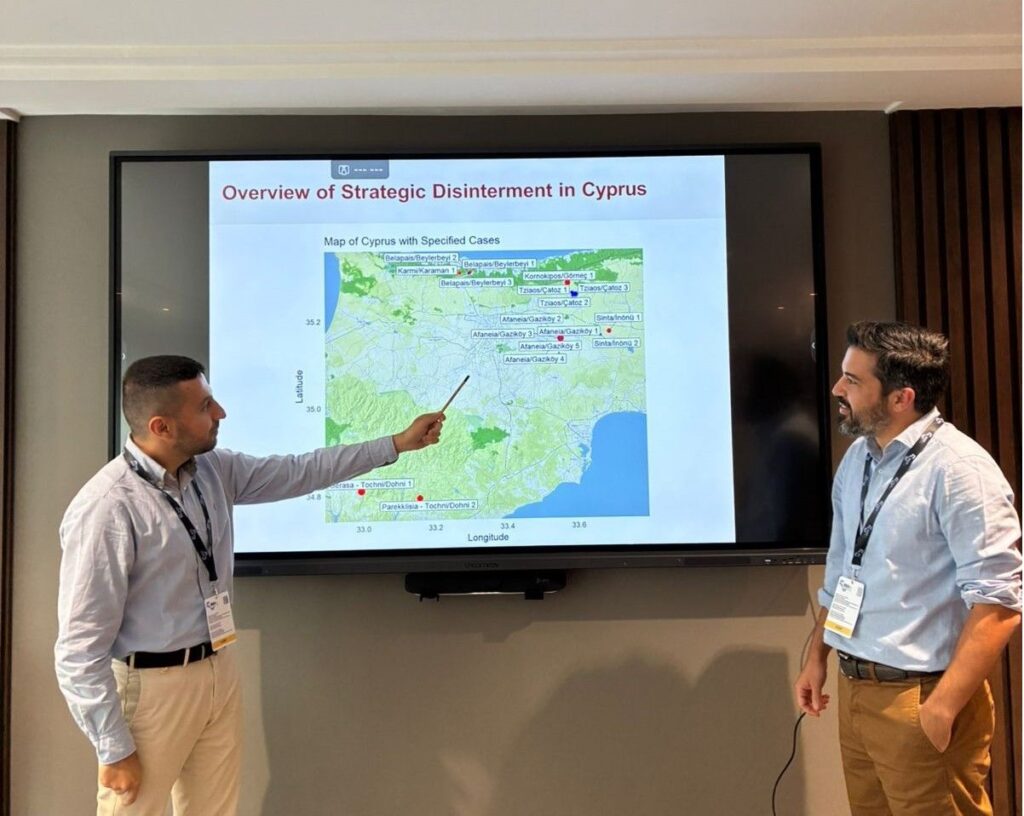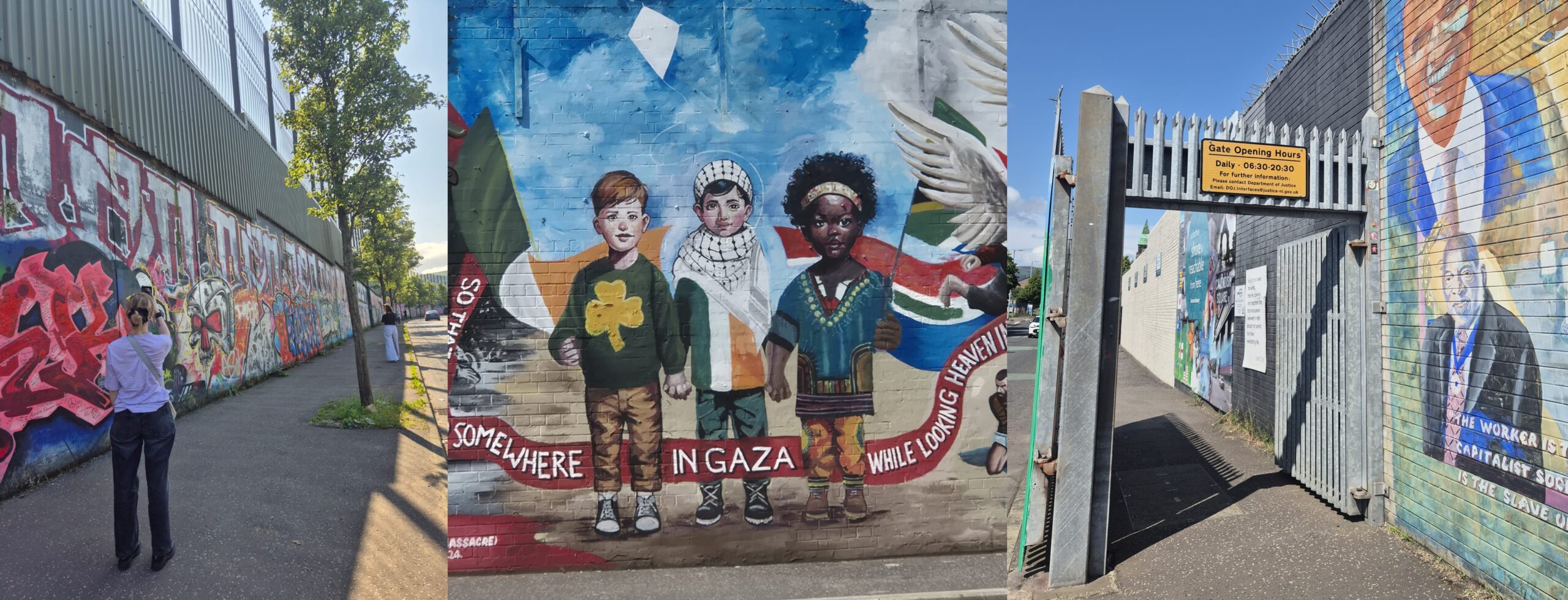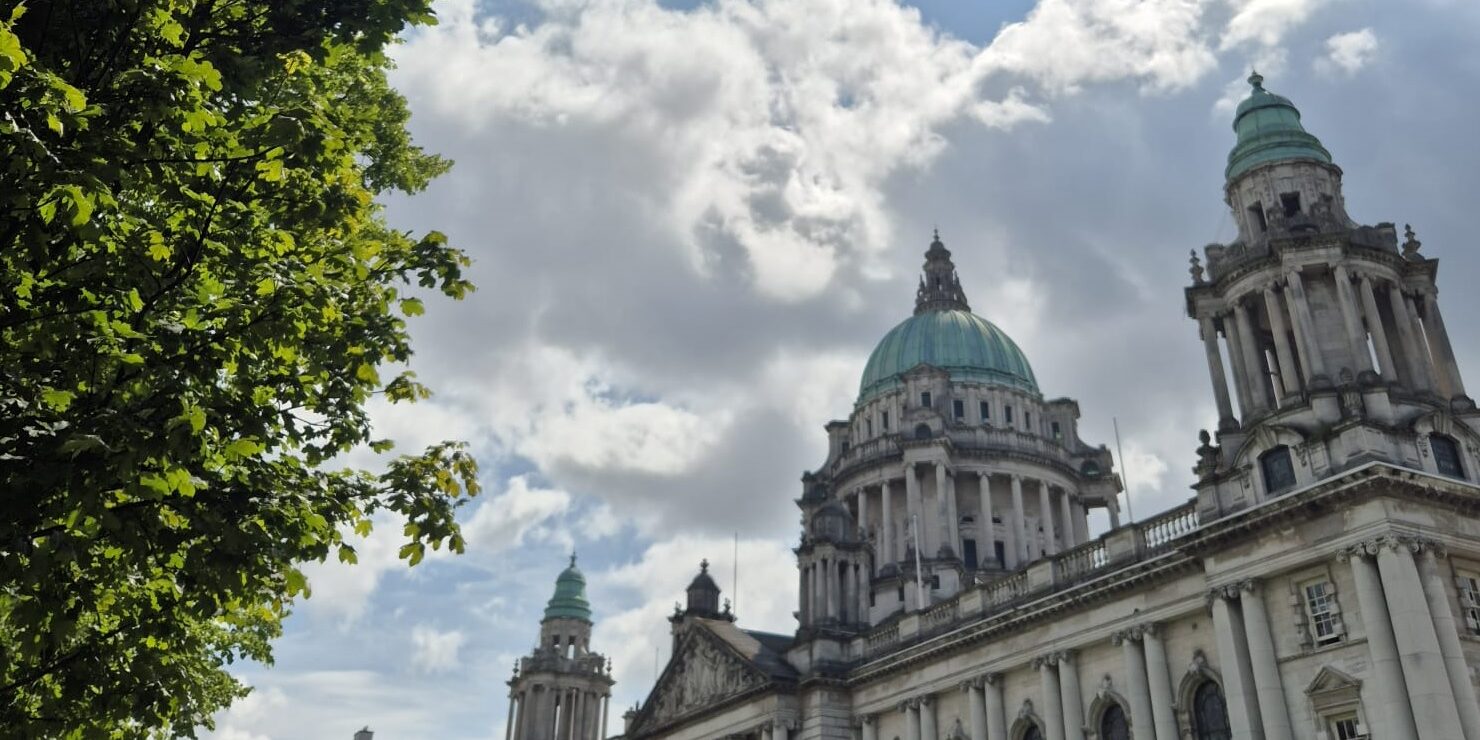Melanie Klinkner, Ellen Donovan, Emily Fisher (MaGPIE), Iosif Kovras, Nikandros Ioannidis, Maria Mikellide and Marisol Intriago Leiva (DISACT)
In September 2024 MaGPIE received an email from Iosif Kovras asking if we would be interested in forming a joint panel at the British International Studies Association (BISA) conference in June of the next year. To reflect on a moment of serendipity, as this suggestion was mooted to the team Emily just happened to be reading one of Iosif’s books, Grassroots Activism and the Evolution of Transitional Justice, so because of this, and of course, the synergies between our two ERC-selected projects, it was an offer we couldn’t refuse.
The three papers presented were titled:
- Twice disappeared: mass graves disturbances and their effects
- The Afterlife of Disappearances: A Forensic Approach to the Study of Clandestine Violence
- Can digital recording and mapping be a form of protection of the dead?
The ensuing paragraphs will provide a synopsis of these papers.
Paper number one assumed a theoretical lens; presented by Ellen and Emily, it explored how mass grave disturbances, beyond the more widely studied secondary graves, could be understood as specific forms of violence enacted by perpetrators, and specific forms of harm experienced by waiting families and communities. Two case study examples were used, one in Iraq with the Al-Khafsa sinkhole mass grave, and one in Sri Lanka, Kokkuthaduvai.

Ellen (left) and Emily (right) during their paper presentation
The Iraqi Mass Grave Directorate and Medico-Legal Directorate have this year announced plans for exhumation of the mass grave site at Al-Khafsa sinkhole at a cost of £27 million, stating they estimate to find up to 20,000 remains in the site. The Al-Khafsa sinkhole is a 35m wide and 400m deep sinkhole near the Alathba village in southern Mosul attributable to Islamic state from 2013 to 2017. Mass grave exhumation is costly, resource intensive, and complex, which is almost always attributable to a range of disturbances, ranging from the removal of remains from the primary burial site to a secondary site, to administrative and legal delays and environmental factors. In early 2015 Islamic State brought a number of cranes to Al Khafsa and dumped the contents of several large trailers, containing shipping containers, cars, and concrete blast walls, into the sinkhole, filling in the rest of the pit with earth using excavators. Further complicating exhumation, the area was also heavily land-mined, killing a journalist and at least three Islamic Security Force members when the site was retaken 2017, and it is also feared that IEDs were placed among the remains.
Whilst most literature to date on mass grave disturbances has focused on the phenomenon of secondary graves, examples of primary sites such as Al Khafsa facilitate a wider multifactorial understanding of disturbance beyond the removal of bodies to conceal evidence of crimes. Disturbances here are forms of overt violence; an instrument of maximising harm and injury against local populations by inscribing fear and terror into the landscape, leaving material traces that linger long after the event. Consequentially, violence is extended temporally, long after the perpetrators have left, as local populations are left to live with the visibility of knowing or suspecting the location of a loved one’s remains, without any prospect of identification.
Kokkuthaduvai, in its enactment of violence and experience of harm, differs from the terror-related harm by armed groups. Instead, it demonstrates how a second disturbance can be undertaken through judicial stalling, bureaucratic inertia and lack of political will. Kokkuthoduvai was discovered in June 2023 and went through a stop-start process of excavation, judicial inquiry and funding stalling for nearly two-years. Although, as of May 2025, forensic reports have been submitted, no human remains have been identified. Such cycles of hope and disappointment, of attending court hearings, of lobbying international experts, all while believing that your loved one could potentially be within this mass grave is painful and traumatic for waiting communities. Life stands still while events and processes unfold. And these processes often prove hollow and performative with few individuals ever being identified. Therefore, structures within which such practices are allowed to operate can be considered violent, but although not physically violent this lack of identification when it could in fact be possible, can be considered a violent act in and of itself. This is not disturbance in its most explicit form, however, it disturbs identification and thwarts reunification of families. These divergent examples, as presented by Ellen and Emily highlight specific forms of harm, separate from the original act of violence of killing and depositing individuals in the mass grave, as important to understand, in and of themselves.
The second paper then explored DISACTS’s research to date. When their research began, it was expected to focus on how forensic science helps uncover past atrocities. But what was found was something even more unsettling: in several countries, perpetrators themselves had returned to disturb the very graves they had created—often years after the violence had ended. These perpetrator-led exhumations weren’t about reconciliation or recovery. They were calculated efforts to hide evidence, to erase traces of responsibility in the face of growing international scrutiny. This pattern emerged in places as different as Chile and Cyprus, where remains were secretly relocated—sometimes by the military, sometimes by paramilitary groups—with the aim of avoiding accountability. In such cases, forensic work becomes essential. Not just for identifying victims, but for understanding the logic behind clandestine violence. Forensics allowed us to see which graves were targeted, when, and likely why – revealing that these actions weren’t random. Graves holding prisoners or detainees, for example, were far more likely to be disturbed. DISACTs work underscores how forensic evidence can speak when witnesses are silent or unavailable. It helps reconstruct the decisions of perpetrators long after the fact—and, in doing so, brings a measure of clarity to deeply hidden crimes.
This work sits at the core of what the DISACT project aims to understand: how violence is managed, concealed, and remembered. It also complements the goals of the MAGPIE project, which explores how forensic science and memory practices intersect in post-conflict settings. Together, these efforts highlight the value of interdisciplinary approaches to uncovering the complex legacies of political violence.

Nikandros (left) and Iosif (right) during their paper presentation
In the final presentation, Melanie’s paper outlined MaGPIE’s methodological approach to capturing the magnitude of mass graves through mapping. Her presentation synthesised the recently published collaborative paper in the International Review of the Red Cross. The data assemblage behind the mapping effort will help preserve sites of conscience and the bodies they contain thereby, at a minimum, acknowledge that they exist.
As an important add-on, BISA, this year, took place in Belfast and the MaGPIE attendees sought to understand a little more of the city’s history and so added into their itinerary a traditional Belfast Black Taxi tour. They were guided through the Shankhill and Falls Roads showcasing the division that still exists across the city through poignant murals that depict visual narratives of, and connections to, past and present conflicts. Due to the recent nature of these Troubles, the taxi driver had personal lived experience of these community divisions. The Good Friday Agreement may have put an end to the atrocities committed, however what an agreement cannot do is end discord at its core, and peace, to this end is contingent on individuals consistently believing in it and choosing to act upon it.

Images taken by the team during the Black Taxi Tour
The two teams are delighted to continue their dialogue and exchange at a forthcoming event in Nicosia, Cyprus.







